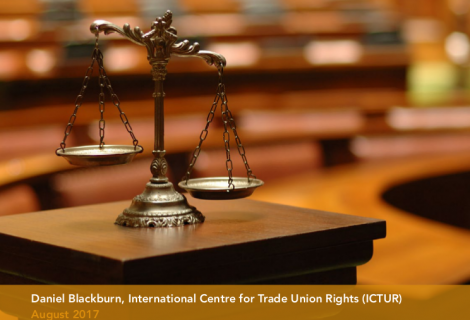
Access to justice for victims of business-related human rights violations is a widespread and growing problem around the world. Complaints of human rights abuses committed by multi-national businesses include land rights issues, forced labour, lack of protection for workers and local people from hazardous substances, as well as poor safety standards. These international businesses remain largely outside the formal regulatory system of human rights law and some are taking advantage of these loopholes.
At a time when there is increasing acknowledgement at the UN level that this problem needs to be addressed, SOMO initiated this report that was commissioned by a group of civil society organisations associated with the Treaty Alliance and active in Europe. In this capacity we have been engaging in the sessions of the Intergovernmental Working Group on Transnational Corporations and other Business Enterprises, as well as with European policy-makers and European Member State policy-makers on the need for an international binding instrument on business and human rights (referred to hereafter as ‘Treaty’), as well as looking at what this Treaty might look like.
During this process, we often heard the argument that a Treaty would not address the fundamental problems that persist in the business and human rights sphere. We commissioned this report with the aim of developing a substantiated and well-documented approach to an often polarised debate between proponents and opponents of the Treaty. We started by asking a rather straight-forward question: How can a UN Treaty on business and human rights improve access to remedy for victims of business-related human rights abuses?
We are grateful to Daniel Blackburn (Director of the International Centre for Trade Union Rights) for accepting this research assignment. The author selected five well-documented cases of litigation that played out partly in European courts. He used publicly available information to analyse – from a victim’s point of view – the barriers they faced in accessing remedy for the abuses they have suffered. He went on to analyse the existing and potential policy approaches designed to address these barriers, thereby identifying elements that could be built upon by a Treaty. The cases and barriers described in this report are not new, and will probably resonate well with those familiar with access to justice issues in the business and human rights field. The goal of the current report is to link the ongoing barriers with potential elements of a Treaty.
The analysis concentrates on barriers to justice for victims of business-related human rights abuse; a more political economic analysis of the driving forces behind these abuses is largely outside the scope of this report. In its recommendations, the report focuses on Treaty elements that would improve access to remedy for victims. Beyond the recommendations of this report, the commissioning organisations envision – and indeed are already working on – developing additional elements that could enhance the Treaty’s regulatory effect. For example, CIDSE has just published a report that proposes model clauses for the Treaty to ensure the primacy of human rights in trade and investment policies. In addition, several organisations are supporting members of the Dismantle Corporate Power campaign, which is calling for the Treaty to address more elements in addition to improving access to remedy.
The author of the report provides a number of straightforward recommendations about how the Treaty could add value so that it builds on and complements the UN Guiding Principles. As the initiator of the report, SOMO hopes these recommendations will contribute to the development of an effective and significant UN Treaty that will help to address the urgent concerns highlighted in this report.